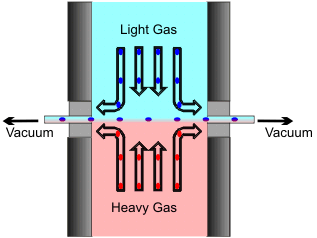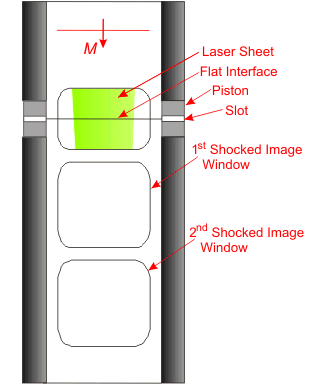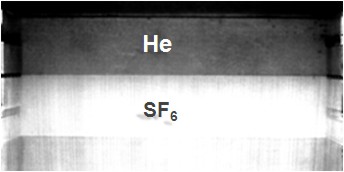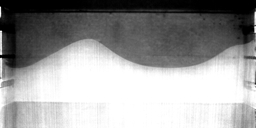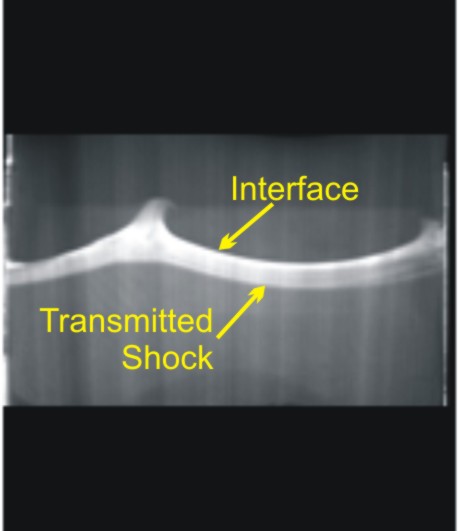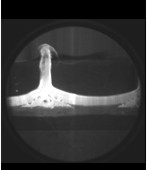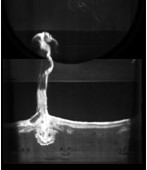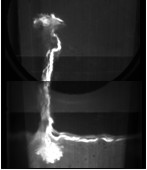
|
|
|
 |
|
Richtmyer-Meshkov Experiments Utilizing Pistons to Generate the Initial Condition
An experimental initial condition generated using this technique is shown below. The light gas is helium (He) and the heavy gas is sulfur-hexafluoride (SF6). This is a low Atwood number interface where the Atwood number is defined as a density ratio A=(&rhoH-&rhoL)/(&rhoH+&rhoL) and &rhoL is the density of the light gas and &rhoH is the density of the heavy gas. The interface is visualized by seeding the SF6 with small (micron-sized) smoke particles while the unseeded He remains transparent. This visualization technique provides a high contrast between the two gases so the geometrical evolution of the interface may be studied. The sinusoidal motion of the pistons generates a standing wave. The high amplitude to wavelength ratio that is created on this interface results in a wave that resembles a curtate cycloid (trochoid) with the highest curvature associated with the peak location of the heavy gas and the lowest curvature with the trough location. From the stagnation plane starting point, the pistons are cycled 3 revolutions at 2.55 Hz and the resulting standing wave is used as the initial condition for the RM experiment. A modal content comparison of the experimental interface with a cosine and cycloid may be seen here.
To quantify the 2D nature of the interface, this same imaging technique was applied to incremental distances in the x-direction and surface reconstruction from all of the measurements is shown below. The cyan rectangle represents the slice at the center of the tube where imaging occurs during the RM experiments. A small dampening of the amplitude occurs at the minimum and maximum x positions and this is due to the no-slip condition at the front and back walls of the shocktube. For the central 15 cm of the test section (5<x<20) the interface is predominantly 2D, thus this RM experiment is categorized as 2D.
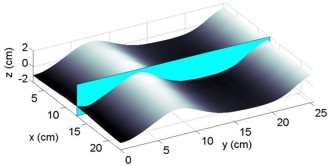
A time sequence of a He-SF6 interface accelerated by a M=2 shock wave is shown below. The age of the interface is listed beneath each of the four images and is the time from the acceleration of the initial condition to the laser pulse which illuminates the interface. The interaction of the planar shock wave with the perturbed interface results in a transmitted shock wave that is no longer planar (which would appear as a horizontal line) but has been imprinted with the interfacial perturbation. This transmitted shock becomes planar downstream of the interface and this replanarization process results in secondary baroclinic vorticity in the flow-field which affects the geometrical evolution of the interface. A spike and bubble are well developed at t=0.67 ms. At later times, the bubble has nearly flattened which is a phenomena only experimentally observed in RM experiments where the Atwood number is low and shock strength is high. Another aspect of the instability's asymmetrical development is the long, thin spike of heavy fluid that penetrates a distance greater than one wavelength at the latest time shown. The high growth rate and narrowness of the spike have prevented the characteristic vortex roll-up of heavy fluid that results in mushroom-type features seen in experiments with low shock strength and moderate-high Atwood number.
|


